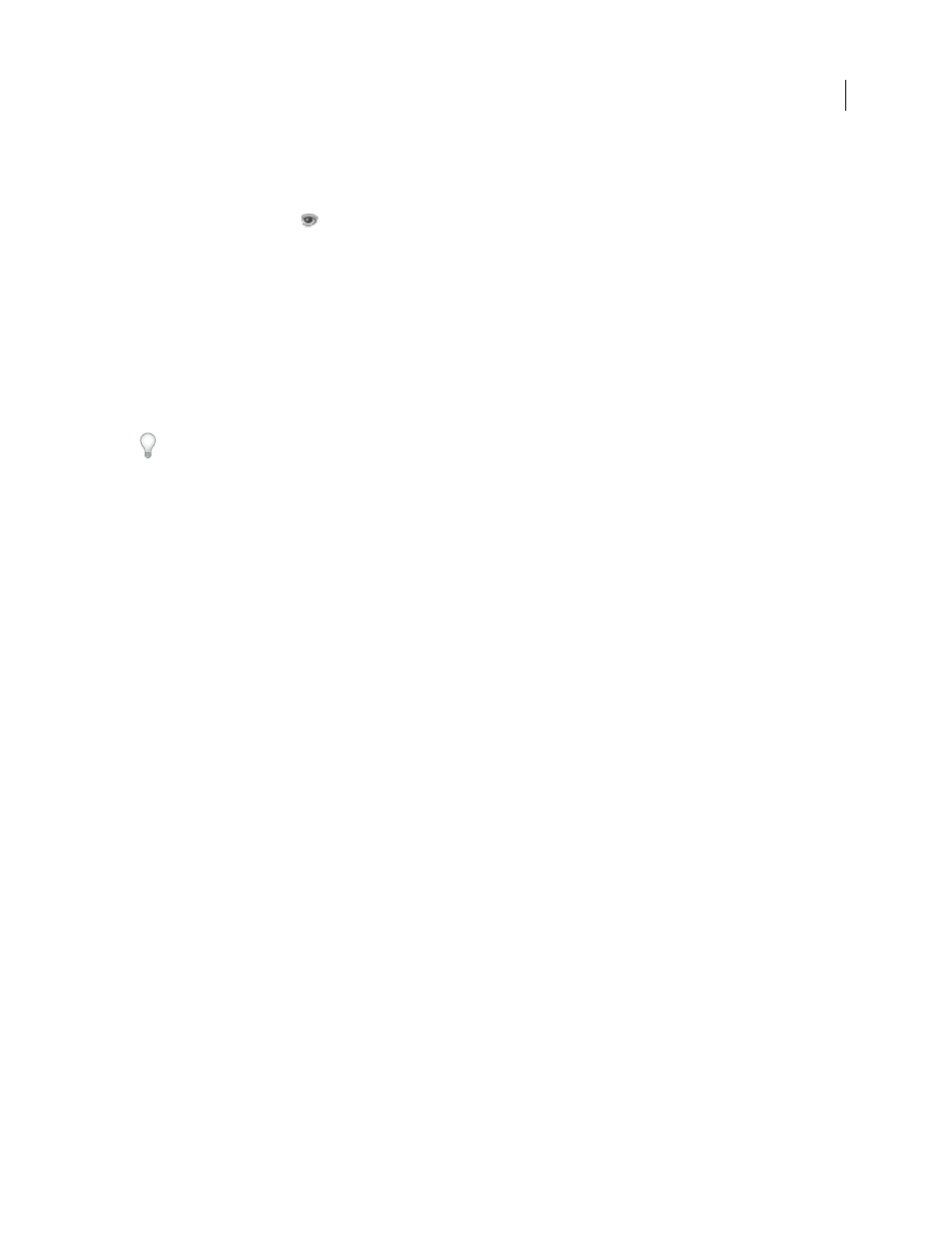Shatter effect – Adobe After Effects CS3 User Manual
Page 513

AFTER EFFECTS CS3
User Guide
508
Before you apply a layer map to a particle layer, they must be in the same composition, in a stacking order that
produces the results you want. If you want particles to be visible in front of the layer map, make sure that the layer
with Particle Playground applied is in front of the layer map. If you don’t want the layer map to be visible, hide it by
clicking the layer’s eye icon
in the Timeline panel.
RGB layer maps
Particle Playground can extract brightness values separately from the red, green, and blue channels in an image. If
you want to create different layer maps for each channel, use a program that can edit individual color channels, such
as Adobe Photoshop, and then paint or paste each layer map into its own channel. Save the layer map as an RGB
image in a format After Effects can import. The image may look unusual when viewed in RGB mode because it’s
intended to be used as a single hidden layer containing three different layer maps, not as a visible color layer.
When you apply an effect that can use each color channel as a separate layer map, you can still use a grayscale image;
the RGB channels will be identical.
If you already have three separate images, you can combine them into a single RGB file by using the Set Channels
effect. Set Channels can load each image into its own channel in a combined file, making it suitable for use as an
RGB layer map.
Improving performance with Particle Playground
Keep the following in mind when working with the Particle Playground effect:
•
When you’re generating a Particle Playground effect, keep an eye on the Info panel to see how many particles are
being produced. If an effect contains more than 10,000 particles, it can significantly slow rendering. If you notice
performance problems, set Particles Per Second and/or Particles Down to relatively low values (between 1 and 100).
•
The Grid and Layer Exploder generate particles on every frame, which may generate too many particles for the
effect you’re creating and slow down rendering. To avoid continuous particle generation, animate these controls
to decline to zero over time: Layer Exploder, Radius of New Particles, Grid Width and Height, Particle Radius, and
Font Size. Then Particle Playground generates new particles only at the start of a sequence.
•
When you apply a Particle Playground effect to a layer, the particle positions aren’t limited to the bounds of that
layer. To control particles that you can't see or that appear near the edge of the image, use a Selection or Property
Map that’s larger than the area of the Particle Playground layer. Also, note that After Effects takes an image map’s
alpha channel into account. If you want transparent areas of your map to affect the particles, precompose the map
layer with a black solid behind it.
To specify field rendering with a Particle Playground effect, select Enable Field Rendering in the Particle Playground
options dialog box. Then Particle Playground calculates the simulation at double the frame rate of the current
composition, which is what field rendering requires.
Shatter effect
The Shatter effect explodes graphic images. Use the effect’s controls to set explosion points and adjust the strength
and radius. Anything outside the radius doesn’t explode, leaving portions of the layer unaltered. You can choose from
a variety of shapes for the shattered pieces and extrude the pieces to give them bulk and depth. You can even use a
gradient layer to precisely control the order of an explosion. For example, you can import a logo and use Shatter to
blow a logo-shaped hole in a layer.
Note: To reverse the temporal direction of the Shatter effect (i.e., have the pieces come together instead of fly apart), apply
the effect, precompose the layer, and then time-reverse the precomposition layer.
This effect works with 8-bpc color.
